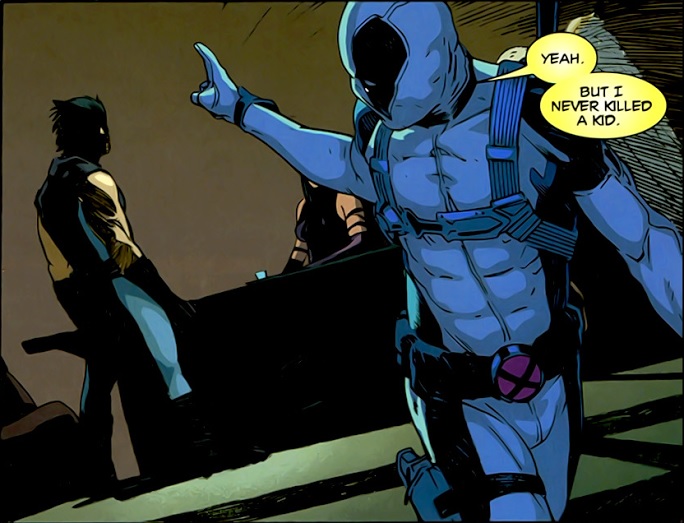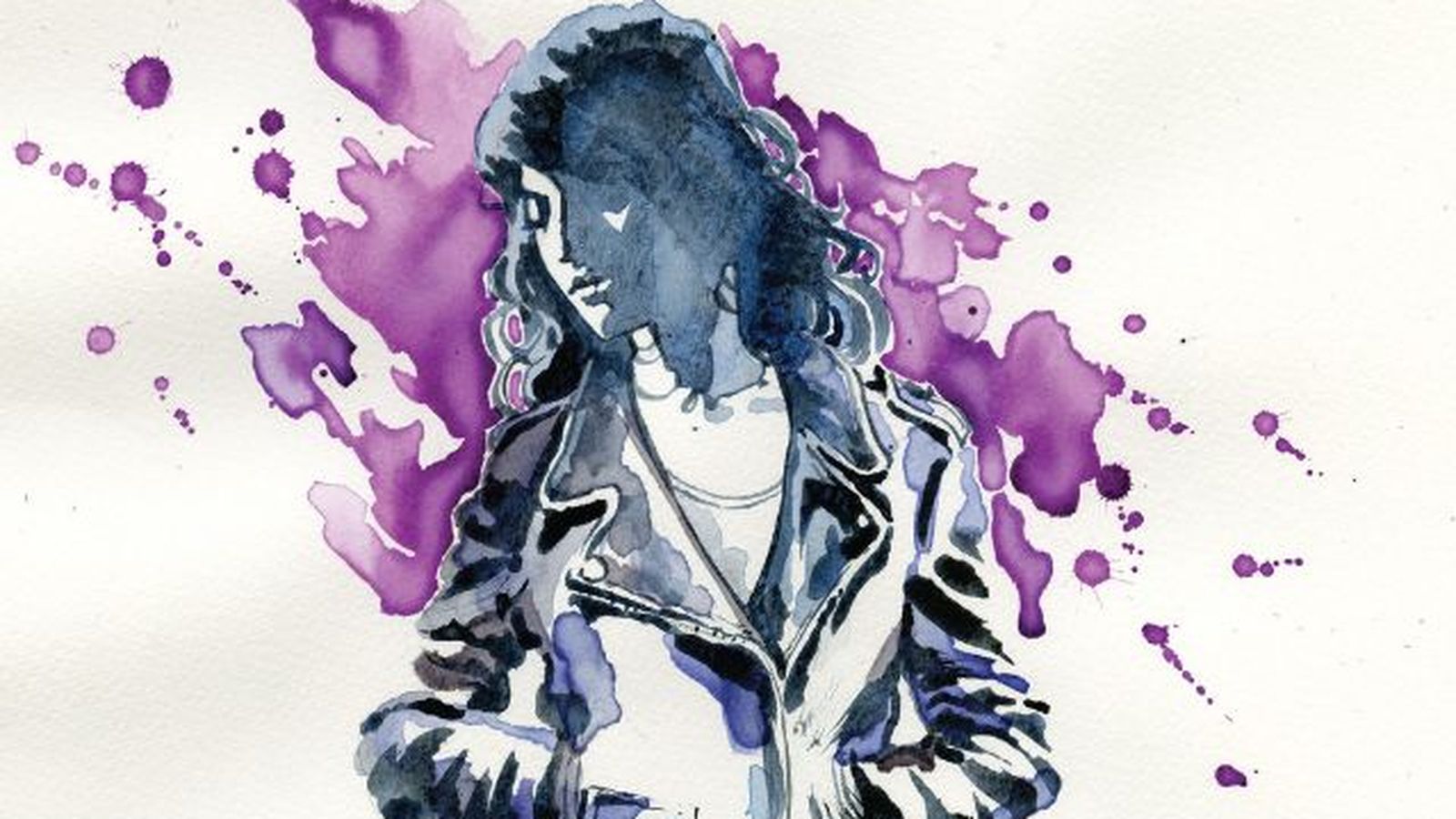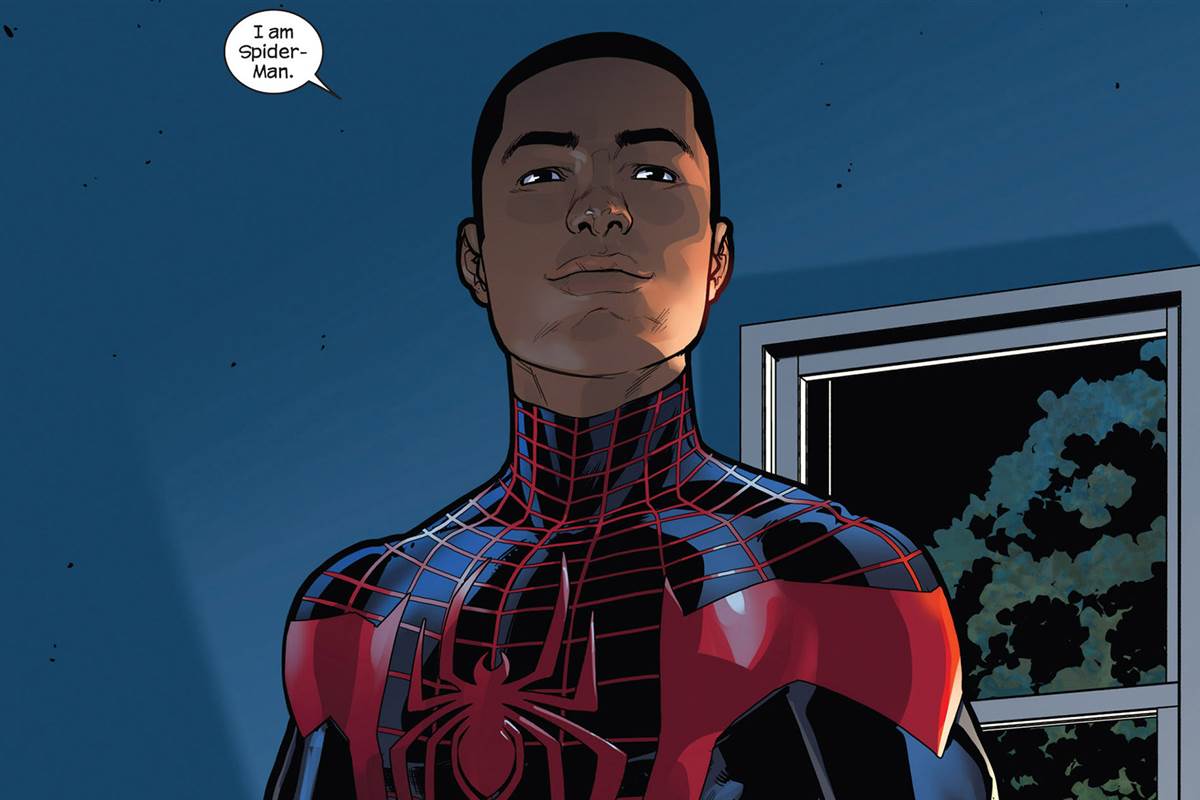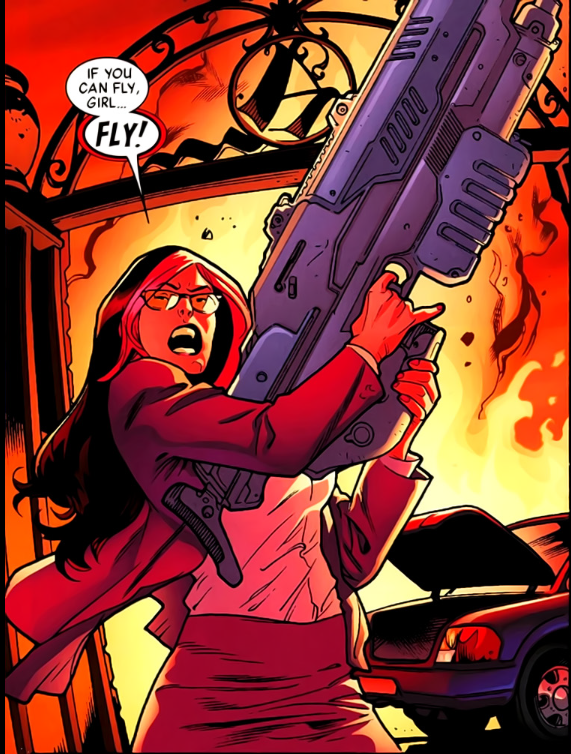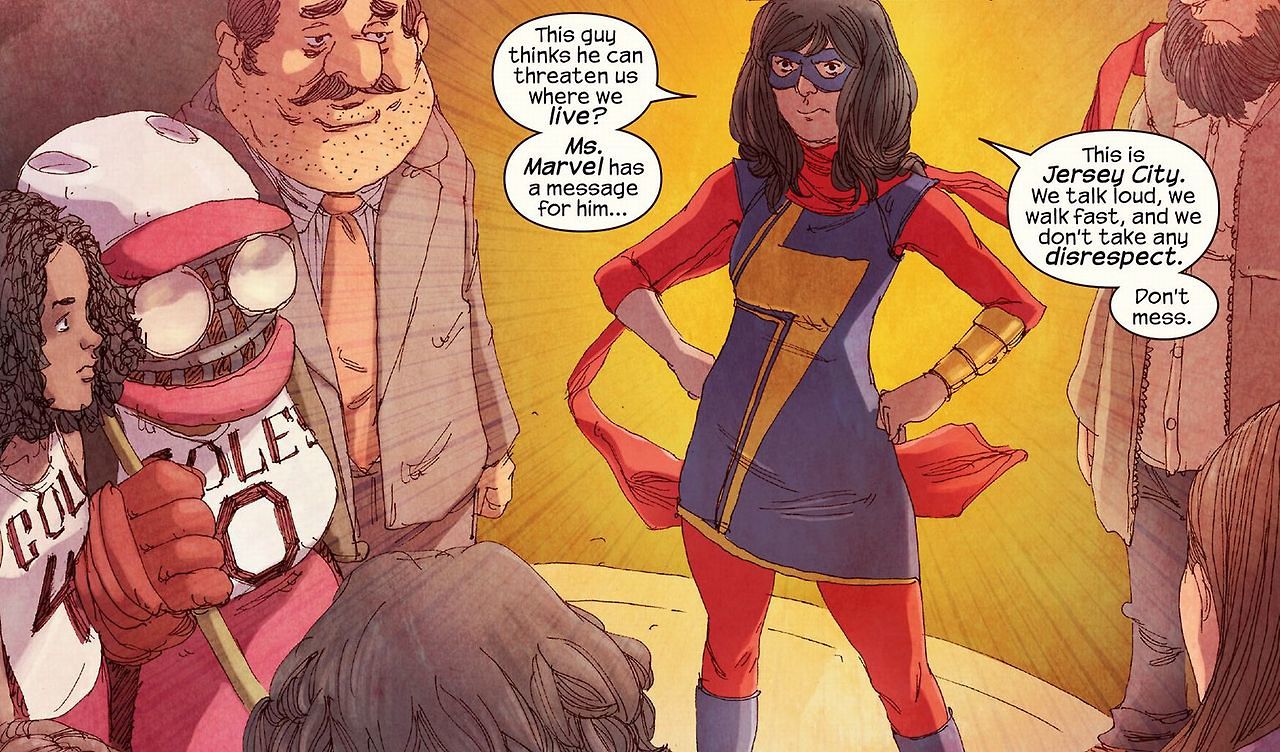Diverse Characters Need Diverse Writers: Why Brian Michael Bendis Needs to Let Other Kids Play With His Toys
Sharing is caring.
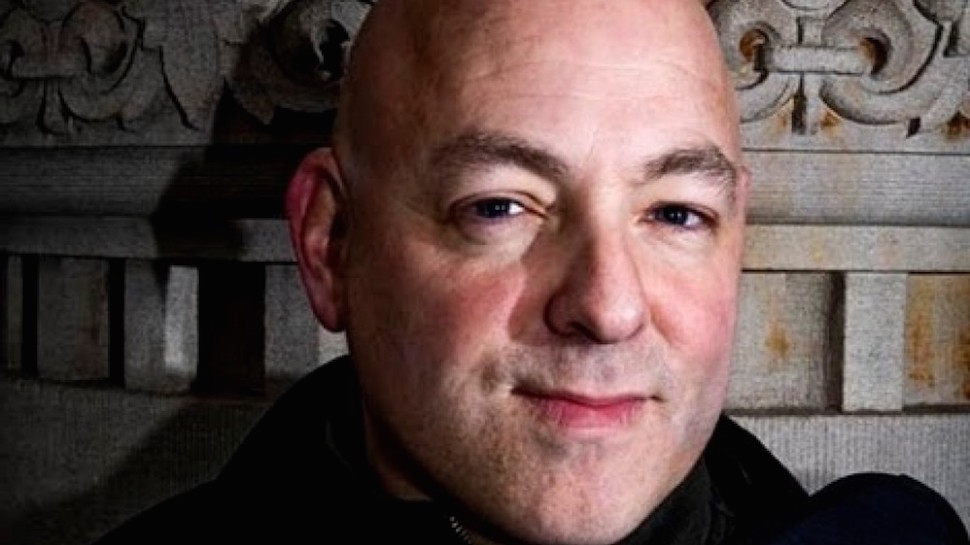
A pretty good analogy that has been used to describe vast shared worlds, like the Marvel and DC Universes and the Star Wars EU, is that of a toy box. Each new character created by writers and artists is a new toy that can be enjoyed by fans and used to tell compelling stories. For example, Deadpool started out as a Deathstroke knockoff created by Fabian Nicieza and Rob Liefeld. Later, Joe Kelly and Ed McGuinness turned him into the darkly tragic, yet hilarious character beloved by fans that breaks the fourth wall on a consistent basis. Later, in his 2010-2013 run on Uncanny X-Force, Rick Remender made him the unexpected conscience on a black ops team that included the actual superheroes Wolverine and Psylocke as he calls out his fellow team members for being okay with the murder of Apocalypse as a child.
This example of Deadpool shows how switching creative teams can add depth and nuance to characters in shared universe and sometimes even turn a gag character into a pop culture icon. But some kids, er, creators don’t want to share their toys, especially Brian Michael Bendis, who has been one of Marvel Comics’ star writers since 2000 and currently writes their highest selling comic, Civil War II.
Quick disclaimer. I am actually a huge fan of Mr. Bendis’ comics. His character-driven, action-packed Ultimate Spider-Man series featuring Peter Parker and later Miles Morales got me hooked on the comic book medium and is still a part of my monthly pulls. I also enjoy how he combined the film noir, crime, and psychological thriller genres with the superhero genre in his runs on Daredevil and Alias. I also wrote about how Iceman’s coming out as gay mirrors my own coming out experience at length elsewhere. My critique comes from a place of respect and admiration for him and not to merely throw a big name writer under the bus.
Bendis has a good inclination toward creating new female, POC, people with disabilities, and LGBTQ characters for the Marvel Universe, but then has a bad habit of being the only writer who advances their stories in a meaningful way. Or he hands them over to another straight white male instead of someone who can draw on lived experience to write the character. It is good that he is helping to make the Marvel Universe mirror the real world around us, but he isn’t using his privilege and influence as a white male and big time writer at Marvel to advance new, diverse voices.
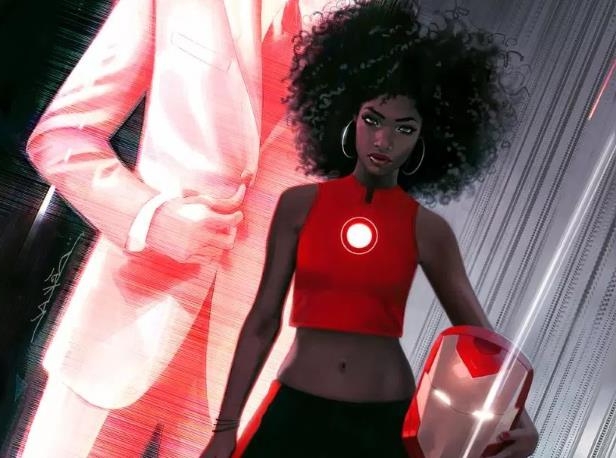
His latest offense has to do with Riri Williams, a 15-year-old African-American girl and genius MIT student, who is set to take on the mantle of Iron Man in the fall. It is pretty awesome that both Captain America and Iron Man will be people of color. However, what is not awesome is that Marvel is paying yet another straight white man to write a new Black character. And this is far from the first time that Bendis has done this.
Echo
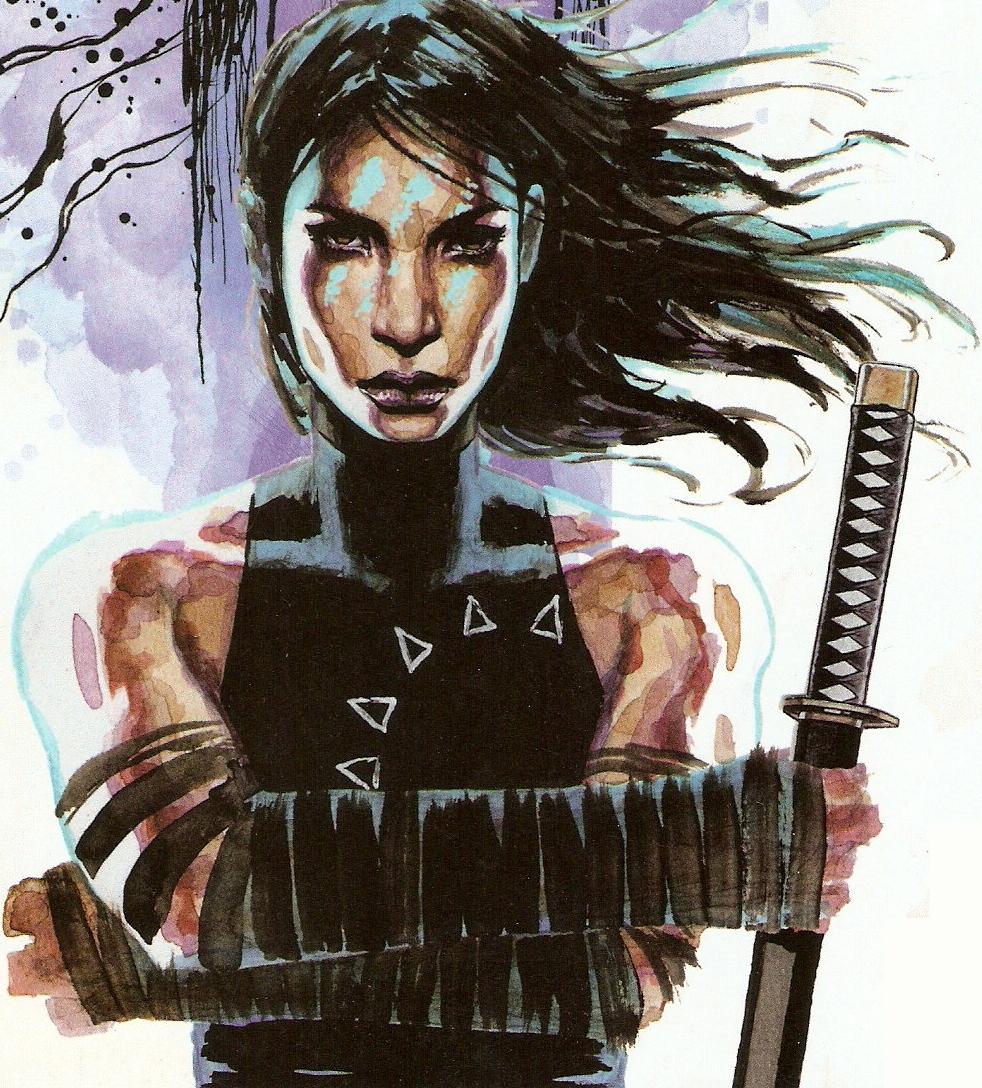
Maya Lopez, aka Echo, is a deaf, Native American and Latinx dancer and artist with the super-cool power of being able to mimic anything she sees, including martial arts moves. Echo was originally created by David Mack and Joe Quesada in 1999, but Bendis wrote most of her significant stories in his run on Daredevil, New Avengers, and Moon Knight.
In Daredevil, Echo was the daughter of one of Kingpin’s hitmen, who was taken in by Wilson Fisk. He financed her education in art and dance, but she later became one of his assassins and was tasked to take out Daredevil after watching his fight against Bullseye on a video tape. She eventually found out that Kingpin lied to her and took revenge on him by blinding him.
Later in his run on Daredevil, Bendis and Mack gave Echo her own solo storyline where she goes back to the reservation where her father grew up. He also made her a member of the New Avengers for a while and a big asset in their battle to take down the Hand, who were secretly being run by the Skrulls. However, after the Secret Invasion event, Echo left the team for reasons that were never explained. When she applied to be Luke Cage and Jessica Jones’ nanny, they forgot she had even been on the team. There was never a woman of color on the New Avengers lineup for the rest of Bendis’ run, and Daredevil was the only person with a disability on the squad (as he was temporarily on the team from 2011-2012, before becoming an evil ninja warlord in the forgettable Shadowland crossover).
Echo finally resurfaced as a stripper in Bendis and Alex Maleev’s Moon Knight series, but they fridged her to increase Moon Knight’s man pain as he vowed revenge on her killer, the supervillain-turned-crime lord Nefaria. She went from being one of Marvel’s few multidimensional representations of Native Americans and people with disabilities to becoming a dead sex object.
Maybe this wouldn’t have happened if Marvel hired a woman, Native American person, or an actual deaf person to write her. Echo is set to come back in Daredevil Annual #1 and will finally be drawn by a female artist, Vanesa Del Rey, so hopefully things are on the rise for Maya Lopez.
Jessica Jones
The superhero turned private investigator Jessica Jones is back in the spotlight thanks to the widespread acclaim for her Netflix series, and she is even getting her first solo series in ten years in October with her co-creators Bendis and artist Michael Gaydos reuniting. This is good because with the exception of a brief stint as an Avenger during the “Heroic Age,” Jessica has in recent years been relegated to sitting on the couch, caring for her daughter Dani, and snarking at Luke Cage.
The reason for her passivity was actually revealed in a joke comparing Brian Michael Bendis to Vito Corleone in The Godfather when a reader asked why she didn’t have much to do in David Walker and Sanford Greene’s Power Man and Iron Fist series. Basically, only Bendis can tell important comic book stories featuring Jessica Jones.
This is a shame because the showrunner of the Jessica Jones TV show, Melissa Rosenberg, arguably told Jessica’s best story to date. The show took powerful swings at rape culture and toxic masculinity while also being a tense, darkly funny psychological thriller. Also, Jessica’s relationship with Trish (Hellcat in the comics) instantly ranked as one of the best female friendships on television.
I would love to see Bendis let Rosenberg or another female writer, like Kate Leth, take a shot at writing the comic book adventures of Jessica Jones, like Agent Carter showrunners Tara Butters and Michele Fazekas got a chance to write an arc of Captain Marvel. Jessica will be written by Chelsea Cain in the upcoming Civil War II: Choosing Sides, so that’s something, but she still deserves a female-written ongoing series.
Miles Morales
After Peter Parker died a heroic death in 2011’s Ultimate Spider-Man #160, writer Brian Michael Bendis and artist Sara Pichelli passed his mantle onto Miles Morales, an African-American/Puerto Rican teenager going to a charter school in Brooklyn. Over the past five years, Miles has put his own mark on the Spider-Man identity and was one of a only few characters from the alternate Ultimate Universe who migrated over to the main Marvel Universe. Some things that differentiate him from Peter Parker are that he has the arguably cooler powers of venom stings and invisibility, both parents are still alive, and he has a drier sense of humor.
Unfortunately, the only writer that has chronicled Miles’ solo adventures for the past five years has been (again) Brian Michael Bendis. He did lend him out to Mark Waid in All-New, All-Different Avengers, but neither an African American nor a Latinx writer has written Miles Morales’ ongoing exploits.
There has been some awkwardness in the current volume of Spider-Man where Bendis had Miles say he didn’t want to be defined by his race. A white writer saying that is skewing a little too close to “All Lives Matter” and erasing his racial identity. This storyline is perhaps why Marvel should get an African American or Latinx writer to pen Miles’ next solo adventure and build on the solid character arc that Bendis has constructed for him up until this past year.
Victoria Hand
Unlike Echo, Jessica Jones and Miles Morales, Victoria Hand never had a solo arc or series. She was Norman Osborn’s right hand woman and voice of reason when he became the top cop of the Marvel Universe during Dark Reign and was appointed by Steve Rogers to be the liaison between the New Avengers and the US government. Hand is also a lesbian.
Even though she was mistrusted by heroes like Spider-Man, who resented that she worked for his archenemy, Hand worked tirelessly to provide the New Avengers with intel about Norman Osborn’s post-Dark Reign movements. Bendis ended up killing her off in his final arc of New Avengers after she was possessed and forced to murder the New Avengers’ magical allies,
Again, Bendis refused to relinquish a female character that he created to other writers (certainly not to a female or LGBT creator) and killed her off for shock value. Hand appeared in Agents of SHIELD Season 1 and suffered the same fate.
The fridging of characters like Echo and Victoria Hand and the sidelining of Jessica Jones is why having diversity behind the scenes as well as on the page actually leads to better comics. For example, DC Comics’ Midnighter, which was written by bisexual cis man Steve Orlando, was one of the most critically lauded books of the “DCYou” lineup and had high trade paperback sales. He and artists ACO, Alec Morgan, Stephen Mooney, Dave Messina, and Hugo Petrus told a story of ultraviolent action that at its heart was about a gay man trying to move and live the single life on after breaking up with a long term partner (Apollo).
Take also the Hugo Award-winning Ms. Marvel about the Pakistani-American Muslim superhero Kamala Khan, who uses her “embiggening” powers to protect Jersey City from mad scientists, evil Inhumans, and even the end of the world. Kamala’s feelings, actions and even her costume draw on the experiences of editor Sana Amanat (the daughter of Pakistani immigrants) and is written by G. Willow Wilson, a Muslim woman. It is proof that having a diverse creative team can lead to both entertaining and enlightening storytelling, instead of rehashing the same tropes and cliches ad nauseam.
And sometimes handing off the characters you create to another writer can strike gold. In 2009, Bendis co-created an espionage team of superpowered young people called the Secret Warriors. He then handed the characters off to an up-and-coming comics writer named Jonathan Hickman and helped plot the first arc of the Secret Warriors series. This comic had a big influence on Marvel’s films and TV shows, like the “SHIELD is HYDRA” plotline in Captain America: Winter Soldier and the emergence of the hero Quake in Agents of SHIELD. Later, Hickman ended up having long runs on both Fantastic Four and Avengers and writing the comic that ended the original Marvel Universe (Secret Wars). He has also been nominated for four Eisner Awards.
If Bendis did something similar with Riri Williams and Invincible Iron Man, working with a female African-American writer on the plot for the first arc before handing the series over to her entirely, it could be a game changer. Bendis would be able to leverage his talent and name recognition to bring new voices and experiences to the Marvel Universe toy box, voices which we know will be welcomed based on the success of series like Ms. Marvel and Patsy Walker, AKA Hellcat. But that can’t happen until he learns how to share.
Want more stories like this? Become a subscriber and support the site!
Logan is a nerdy bisexual ginger, who is a grad student and freelance pop culture writer in Hunter S. Thompson’s hometown of Louisville, Kentucky. He loves comics, music (especially New Wave and BritPop), film (especially Quentin Tarantino and Edgar Wright), sports (college football and NBA), TV, mythology, and poetry. Joss Whedon is his master, Kitty Pryde is his favorite superhero, and his current favorite comic is The Wicked + the Divine. Follow him at @MidnighterBae and Graphic Policy.
—The Mary Sue has a strict comment policy that forbids, but is not limited to, personal insults toward anyone, hate speech, and trolling.—
Follow The Mary Sue on Twitter, Facebook, Tumblr, Pinterest, & Google+.
Have a tip we should know? [email protected]
